calsfoundation@cals.org
Women
From prehistoric times through the French and Spanish colonial eras, from the territorial period through statehood, secession, Reconstruction, and modernization, women have played major and defining roles in the development and history of Arkansas. Women of every race, ethnicity, religion, social class, and legal status have been instrumental in shaping the culture and social structure of Arkansas, even as they have been forced to struggle for equal rights, political and legal equality, economic and social independence—even the most basic human right of freedom.
Prehistory
The first women in Arkansas were likely the descendants of Asians who crossed the land bridge to North America between 18,000 and 10,000 BC. During the Paleoindian, Woodland, Archaic, and Mississippian periods, women farmed, hunted, and gathered alongside men. They created vessels to hold food, took part in trade activities, and cared for their families and tribal members. Many southeastern tribes were matrilineal societies, in which lineage was traced through the mother’s side of the family, though this did not necessarily translate into tribal leadership roles for women. The maternal side of the family was very important, as they chose marriage partners for and gave divorces to family members.
Colonial Period
European exploration of Arkansas, which began with Hernando de Soto’s crossing the Mississippi River in 1541 but did not continue until the late seventeenth century, likely had a profound effect on the lives of Native American women in the state. Indian women traditionally held some power over marriage and other activities related to the family, while the men held the power in politics and religion. Like their white counterparts, these women were caregivers and, as newly introduced European diseases such as smallpox devastated Indian populations who lacked natural immunities, they bore much of the responsibility of caring for dying men, children, and elderly people. As European exploration and settlement in Arkansas continued, Arkansas’s Indian tribes—most notably the Quapaw, Caddo, and Osage—found themselves increasingly displaced, their cultures collapsing, their lands expropriated, their economies disrupted. More and more of the Indians who remained in Arkansas adopted French—and, later, American—customs and economic activities. Because French women rarely participated in colonization efforts in North America, many Indian women married French soldiers, explorers, and settlers. Tribes whose women married European men included the Osage, Quapaw, Paduca, Kansas, Abenaki, Loup, and Cherokee. Only in the 1830s did white women replace Indian women as the majority of their sex in Arkansas.
In 1682, French explorer René-Robert Cavelier, Sieur de La Salle, arrived in Arkansas and claimed the entire Mississippi River basin for France, naming the territory Louisiana in honor of France’s King Louis XIV and inaugurating Arkansas’s French colonial period. Four years later, the French explorer Henri de Tonti established Arkansas Post (Arkansas County) as the first permanent European settlement in Arkansas. Arkansas Post’s first inhabitants were primarily French men. When European women were available for marriage, they might be taken into a household under an agreement that the couple would live as husband and wife until a Roman Catholic Church official could arrive to declare the union legal. Many couples lived together for years and even started families before they received the paperwork and the sacrament to legalize their unions. Marriages between Indian women and European men were also legalized at times, but not often.
During the French and Spanish colonial periods, European women brought to Arkansas their culture, belongings, and social systems. Some brought fine household goods from Europe, while others lived simply in small homes with makeshift furniture crafted in European styles of local materials. Their social, legal, and economic status depended upon their race and whether they were married, widowed, or single. During the colonial era, they could be categorized as gentlewomen married to high-ranking army officers, wives and daughters of the local merchants, important helpmates of traders and trappers, African-American slaves and freedwomen, or Indian women who married or cohabitated with white men or who worked within their own tribes. All were under French colonial statutes by which women had more freedom within marriage (including freedom from the payment of a husband’s debts), though technically men still held control over women. Because of remoteness and the need to survive on the frontier, a woman had the opportunity to contribute to the colonial economy alongside her husband as a merchant, contractor, or property owner. Some of the most socially and economically powerful women in colonial Louisiana were widows who were independent and wealthy because they had inherited their husbands’ property.
Most women of African descent in colonial Arkansas were slaves. Slave women and a few freedwomen labored in agriculture and domestic service, while others often worked for their owners in merchant shops. Because Arkansas’s population in the eighteenth century was so small, women of European and African descent often worked side by side to survive and thrive in the colony, although the work done by slave women was for the primary benefit of their owners. Hazards of life for women in colonial Arkansas were many, and included disease, accidents, war, and kidnapping by Indians. When Indians raided Arkansas Post several European women were kidnapped and sent into slavery along the Gulf Coast; other kidnapped women integrated themselves into tribal cultures through forced and willing marriages (although existing records indicate that these were few in number).
Following the Louisiana Purchase of 1803, Arkansas’s women faced new challenges in adapting to the increasing influence of Anglo-American settlers and the culture and gender roles they brought with them. These changes forced many colonial women to retreat from the lifestyle of relative independence and social mobility they had enjoyed under the French and the Spanish to more domestic and family-centered activities as Anglo-American tradition, culture, and common law became dominant, imposing such restrictions as the loss of property rights to husbands upon marriage.
Antebellum Period
Anglo-American immigrants from the states and territories to the north and east began to arrive in Arkansas to establish communities after 1803, many through land grants awarded to veterans of the War of 1812. Unlike the French colonization, Anglo-American immigration included women and children and was focused more on settlement and agriculture than on trapping and trading. As had been the case during the colonial period, women of all races spent much of their days cooking, cleaning, sewing, and farming. In addition, women of all races and social classes were trained from childhood to care for the sick, assist their neighbors during childbirth, raise large families, and marry young (an economic advantage on the frontier). As Arkansas’s population grew and the area became the twenty-fifth state in the union in 1836, and as urban centers were established and the state became more settled, white women in many parts of the territory had increasing opportunities to buy such supplies from urban merchants as food, furniture, cloth, and kitchen goods, thereby freeing themselves for more social activities. On the other hand, those living in the country often had to render their own cloth, harvest and preserve their food, and generally rely less on manufactured goods than did their urban counterparts.
Given the increasing free time available to them in urban areas, white middle- and upper-class women in early nineteenth-century Arkansas might have engaged in a variety of extra-domestic activities, including reading groups, church, drama and debate clubs, singing ensembles, concerts, or benevolence associations such as those dedicated to temperance or assistance for the poor. On Sundays, most urban women attended churches representing the many denominations found in antebellum Arkansas, where they found their own voices of reform through committee and charitable work for the poor and needy. They also raised funds for their churches through fairs where homemade goods were sold. Rural women, on the other hand, had fewer opportunities for socializing and often relied on camp meetings and traveling revivals to receive religious instruction and visit with neighbors.
White women in Arkansas, as in the South generally, were somewhat educated in the antebellum period, but such attainment was difficult because Arkansas had no viable free education system for children. Schools did exist in Arkansas for those wishing to give their daughters an education: Springhill Female Academy in Hempstead County and the Fayetteville Female Seminary run by Sophia Sawyer were opened to instruct young girls in a variety of subjects and ornamental crafts such as piano and dance. Other prominent families might send their daughters to the East Coast to receive an education. Politicians Chester Ashley and William Savin Fulton both sent their daughters to a female seminary in Georgetown, Virginia.
In antebellum Arkansas, rural and urban Anglo-American women were often directly involved in the management of their family property. Still, this was an era in which a woman’s property became her husband’s upon marriage, and women had few legal protections in most states, including Arkansas. In 1835, the territorial legislature attempted to protect women’s property rights (one of the earliest of such attempts recorded in American history) by passing a law that stated that women’s property could not be taken and used to pay a husband’s outstanding debts incurred before marriage. In 1840, a bill was introduced that would have protected a wife’s property after marriage, but it was vetoed by Governor Archibald Yell out of concern that it would destroy the family unit. However, in 1846, Governor Thomas Drew signed into law the Arkansas Married Woman’s Property Law, allowing a woman to register her property at her local country courthouse.
African-American slave women in Arkansas were primarily engaged in agriculture, although slavery was common in the state’s few urban centers, where slave women might be leased out as maids to work in hotels or private homes. There was great concern in the largely rural South over the dangers urban life posed to the “peculiar institution”: urban slaves tended to have greater freedoms, were more likely to be exposed to and interact with people of different races and social status, and tended to have more skills and opportunities to develop independent sources of income and perhaps even to eventually purchase their own freedom. Because of such fears, by the 1850s the behavior and activities of urban slaves were increasingly regulated through local, state, and national laws as well as by their masters. An 1859 state law prohibited the residence of free blacks in Arkansas, forcing them either to relocate or to risk being forced back into slavery.
During these antebellum years, Indian women in Arkansas found themselves at a crossroads. They had long enjoyed more rights in French colonial Arkansas and had been more likely to be seen by their French or Indian husbands as social and economic partners, quite at variance with the Anglo-American “cult of domesticity” rapidly being introduced. Of those Indian women remaining in Arkansas, most continued to live on farms with their families and had the same work as their male counterparts while struggling to maintain tribal traditions. However, following various treaties in the 1820s and 1830s that removed the Indian population to reservations in present-day Oklahoma, only a few Indians remained in Arkansas, and they tended to blend into their surroundings by passing as white.
Women in the Civil War
In order to cope with the absence of their husbands and sons during the Civil War, many Arkansas women gathered in groups to make and collect cloth for uniforms, blankets, bandages, and flags to demonstrate their support for the troops and the war effort. In many cases, women took over jobs previously held by men, and they often had to defend their homes while raising children and foraging for food. Virtually all of Arkansas’s women endured great deprivations during these years, including shortages of food and the salt needed to preserve meat. In northern Arkansas, women had the added burden of dealing with bushwhackers and jayhawkers, and many witnessed the torture of relatives, destruction of property, and burning of homes. Mrs. Homer Sloan recounted how, in 1862, when Federal troops arrived at a nearby plantation home in Woodruff County, the female owner of the home saved it by giving troops what remained of her food and livestock and even her sewing machine and yarn for knitting socks. One Mrs. Baker of Searcy County was severely beaten and her elderly husband and young son killed when jayhawkers were not given supplies or financial support from the family. After being beaten, Baker had to bury her son and husband by herself.
At such Civil War battles as Pea Ridge, Prairie Grove, Poison Spring, and Helena, Arkansas women nursed the wounded and sick, witnessing the horrors of battle and their effects firsthand. Despite widespread criticism that such work was unbecoming and inappropriate to their “tender sensibilities,” women sat at the bedsides of dying soldiers in makeshift hospitals and cared for the sick and wounded in their homes, churches, and even convents. For example, Nancy Morton Staples of Prairie Grove and her family tended to the Union and Confederate wounded after that battle in their home and in the homes of their neighbors.
Many African-American women remained in servitude in Arkansas during the war because they had nowhere else to go, or were not aware that they were legally free as a result of the 1863 Emancipation Proclamation, or had been forcibly relocated by their owners to areas such as Texas. As a result, many African-American families were torn apart. When Union troops captured Little Rock and established effective military control over most of the state in 1863, several hundred black women and their children flocked to the Union military camps in search of safety, food, and freedom. In such camps, however, life was harsh and there was often not enough food, clothing, or shelter.
The war destroyed preexisting social structures that, in many cases, had relegated women to positions as second-class citizens or even as human chattel. White women had opportunities forced upon them and took part in events that would affect the outcome of the war. African-American women, while continuing to face hardships, came out of the war with their freedom, at least nominally. As a result of these upheavals, Arkansas’s women found in themselves the voices that would bring about change for them in the late nineteenth and twentieth centuries.
Reconstruction and the Progressive Era
Freedom gave black women opportunities they had never experienced under slavery. For the first time, they could stabilize and strengthen their families by establishing separate households and having their marriages legally recognized. They struggled to educate their children and themselves, sharecropped with their husbands or worked their own land, and served as teachers in the first African-American schools, which were established by the Freedmen’s Bureau. Some black women found work as domestic servants for white families, sometimes serving the same families they had served before the war and performing much the same tasks. Others began long, influential careers; these included Charlotte Stephens of Little Rock (Pulaski County), who was the first black teacher in the city, serving from 1869 to 1939.
African-American women became involved in volunteer efforts: supporting freedmen’s aid societies and helping destitute former slaves, raising money to rebuild communities, and promoting equal rights for women and African Americans. As African Americans were increasingly excluded from political office following Reconstruction, the church soon became the center of their social and cultural life. By the late nineteenth century, African-American women were also active in a number of benevolent social organizations, such as the Women’s Auxiliary of the Mosaic Templars of America. In 1877, thirty-eight African-American women joined the Sisters Union Society in Pulaski County to help improve knowledge in their community. African-American women formed their own literacy and art clubs as counterparts to white women’s clubs; middle-class black women often used these groups as springboards to help those in their own communities and, like white women, to become more prominent and influential.
For white women as well, new opportunities arose in Arkansas after the Civil War. Although prohibited from actively participating in the political process, some made their voices heard and influence felt. Elizabeth Fulton Wright of Little Rock gave money to political parties and causes and supported Governor Elisha Baxter during the Brooks-Baxter War. Others engaged in the same benevolent activities as they had before the war, increasingly aligning themselves with men’s patriotic and fraternal organizations. Women played an essential role in developing the myth of the Lost Cause in the South through such memorial organizations as the United Daughters of the Confederacy (Patrick Cleburne Chapter, 1896), while more radical women from rural and agricultural backgrounds found themselves drawn to such organizations as the Grangers (1875) and groups that sought to beautify roadways and parks.
An important issue for women of all races was that of women’s suffrage. Legislation giving women the right to vote had been introduced in the Arkansas legislature in 1868, but the majority ridiculed the idea. Despite the amendment’s failure, a number of Arkansas women, such as Bernie Babcock and Dr. Ida Joe Brooks of Little Rock, continued to press for suffrage, holding meetings throughout Arkansas in the 1890s and allying themselves with organizations led by Susan B. Anthony’s National American Woman Suffrage Association. After being denied the approval to vote by the Arkansas state legislature in 1913, suffragists formed the Arkansas Woman Suffrage Association to lobby for the right.
As Arkansas approached the twentieth century, a wave of new immigrants began settling in the state, adding their rich traditions and cultures to those already there. While the state’s largest ethnic and racial group remained Anglo-Saxon Protestants, the numbers of Asians, eastern and southern Europeans, Hispanics, and Middle Easterners grew, albeit almost imperceptibly. In particular, Catholic religious orders of women that arrived at this time were able, in part because of their self-sufficiency, to make an impact on society. These orders included the Benedictine Sisters of St. Scholastica in Fort Smith (Sebastian County), who have run a school in Arkansas since 1887, and the Olivetan Benedictine Sisters of Holy Angels Convent, who established St. Bernards Hospital in Jonesboro (Craighead County) in 1900.
Early Twentieth Century
The twentieth century brought new strength and vitality to women’s interests and causes in Arkansas. Groups such as the Arkansas Federation of Women’s Clubs (1897), the Daughters of the American Revolution (1893), and the Flora Emblem Society lobbied for an official state flower and new state flag—the latter was designed by Wabbaseka (Jefferson County) native Willie K. Hocker in 1913. Other women’s groups, meanwhile, lobbied for improvements in, among other things, public health and the treatment of mental illness. Their efforts led to the construction of Arkansas Children’s Hospital in 1924. Carry Nation, formerly of Harrison (Boone County), led a crusade against alcohol that culminated in a state law that all but prohibited alcohol by 1915. The Arkansas Pioneer Branch of the National League of American Pen Women (NLAPW) was founded by Bernie Babcock in 1920 to bring together professional women artists, writers, and composers for the protection and sharing of their mutual interests.
Arkansas women made great strides toward greater legal and political rights, despite the fact that the all-male legislature continued to deny women the right to vote, rejecting relevant initiatives in their 1911 and 1913 legislative sessions. Finally, in 1917, the General Assembly gave women the right to vote in primary elections, and in 1919 Arkansas became the twelfth state in the Union and the second in the South to approve the Nineteenth Amendment, giving women the right to vote in all elections.
The first woman elected to office in Arkansas was Frances Matthew Jones Hunt, who was elected to a seat in the General Assembly in 1922. In 1925, the community of Winslow (Washington County) elected its first female mayor and first all-female city council, an administration dubbed the Petticoat Government that went on to serve two terms under the leadership of Mayor Maud Duncan. In January 1932, Arkansas made political history when Hattie Wyatt Caraway of Jonesboro became the first woman to be elected to serve in the U.S. Senate; she later went on to defeat John L. McClellan in the 1938 Democratic primary and won reelection after a campaign that brought Louisiana populist Huey Long to Arkansas to advocate her cause.
As with conflicts prior to 1900, women of Arkansas contributed to the effort in World War I by mobilizing to help the soldiers. They endured Wheatless Mondays and Meatless Tuesdays and served in the armed forces as nurses and administrators. During the Arkansas oil boom of 1921, many women relocated to the Smackover (Union County) and El Dorado (Union County) area to work in the oil industry. They served as laundresses, as store, hotel, and restaurant owners, and as prostitutes. At the same time, the timber industry was booming in the Ozarks, and many women in the northern part of the state held the same jobs as those in south Arkansas. For the first time, some Arkansas women were able to receive electricity from the state-wide power system, Arkansas Power and Light Company. White women were able to enroll at the newly opened Arkansas State Teachers College (now the University of Central Arkansas) in Conway (Faulkner County) to receive a college education and earn more money in their profession, and African-American women could earn degrees from a number of schools, including Philander Smith College, Agricultural, Mechanical, and Normal College (later known as the University of Arkansas at Pine Bluff), Shorter College, or Arkansas Baptist College. In 1927, African-American teachers were finally allowed to take classes by mail from the University of Arkansas and Arkansas State Teachers College.
However, the sharecropping system put many—primarily African-American—women and their families into debt and kept them in a system they could not escape. During the Flood of 1927 and the Great Depression, working-class women and their families faced starvation, and many were forced to rely on private relief efforts of the American Red Cross for sustenance. Others subsisted on what food they could produce themselves or find in the wild. African-American women were more likely to lose their jobs in the 1920s and 1930s than white women, who continued to work in stores and at government jobs. Unrest also encouraged both African-American and white women to join their husbands in the Southern Tenant Farmers’ Union, founded in Tyronza (Poinsett County) in 1934, to fight for a better deal for sharecroppers.
On the eve of World War II, women had made great strides in the state’s political, social, and economic arenas. They embraced the changes of a new century, though they did not venture too far from their traditional roles of tending families and homes. They took the opportunity to make their voices heard and embraced legal options to make changes in society. In 1940, the Little Rock chapter of the Business and Professional Women’s Club endorsed a national right-to-work law; by this time many Arkansas women had joined unions to promote pay equal to men’s. One Arkansas woman even pursued a career in the new field of aviation: Louise Thaden of Bentonville (Benton County) won the 1936 Bendrix Transcontinental Air Race for male and female pilots.
World War II
When the United States entered World War II in December 1941, women once again moved to the forefront of the effort by rationing at home, serving in the Arkansas Women’s Army Corps and the American Red Cross, and taking jobs at plants such as the Arkansas Ordnance Works in Jacksonville (Pulaski County) and other jobs that were opening up across the state, including those at plants that made apparel and leather. Though women made up only two percent of the manufacturing work force (due, in part, to the low number of such plants located in Arkansas), they constituted up to one-fifth of the Arkansas work force. As was the case in previous wars, the social upheavals and labor shortages of the war years offered Arkansas’s women opportunities to break out of their traditional roles and make significant strides toward greater independence and equal rights. However, African-American women were not able to realize such a broad range of options during World War II, still generally receiving lower pay for the same services provided by white women. At the end of the 1940s, Arkansas women, having attained a great deal of independence during the war, began reentering the workplace in unprecedented numbers.
Modern Era
Arkansas women played major roles in the important social movements of the 1950s and 1960s, including the civil rights movement. Women organized, marched, and agitated on both sides of the effort to end legal segregation, most notably during Little Rock’s Central High Crisis of 1957. Such organizations as the Arkansas Council on Human Relations (ACHR), the Arkansas chapter of the National Association for the Advancement of Colored People (NAACP), and the Women’s Emergency Committee to Open Our Schools (WEC)—led by Adolphine Fletcher Terry, the widow of U.S. Congressman David D. Terry and a local activist for libraries, schools, and integration—depended upon the energy and influence women provided in the struggle to desegregate the city’s schools. Six of the Little Rock Nine were young women. Daisy Bates, the leader of the NAACP chapter in Arkansas and copublisher of the Arkansas State Press, kept the attention of the media on the events at Little Rock Central High School. Women who opposed integration at the high school formed the Mother’s League of Central High School and urged the governor to support segregation.
Great social upheavals swept across Arkansas and the nation in the 1960s and 1970s, bringing women and minorities to the forefront of society, government, and business. Many strong Arkansas women banded together to fight political candidates who supported issues deemed detrimental to women’s rights. Paul Van Dalsem of Perry County, who worked to ruin voter registration rights in 1963 and declared that when a woman from his area began “poking around in something she doesn’t know anything about…we get her pregnant and keep her barefoot,” was defeated in his 1966 reelection efforts after women protested his record and statements. In 1968, Virginia Johnson of Conway became the first woman to run for governor of Arkansas. In 1975, the Equal Rights Amendment (ERA), which would have granted women equal rights under the law, was hotly debated by University of Arkansas political science professor Diane Blair and conservative activist Phyllis Schlafly. While their debate brought attention to the merits of the ERA, the Arkansas state legislature never ratified the amendment.
In 1970, the first female-run law firm in Arkansas was founded. In 1971, Governor Dale Bumpers formed the Governor’s Commission on the State of Women, and the first female cadets entered the Reserve Officers’ Training Corps (ROTC) program at Arkansas State University. In 1975, Elsijane T. Roy became the first female justice on the Arkansas Supreme Court. On January 17, 1995, Andree Roaf became the first African-American woman and only the second woman to ever serve on the Arkansas Supreme Court. Nancy J. Hall became Arkansas’s first constitutionally elected official in 1963 when she assumed the office of state treasurer, to be followed by Jimmie Lou Fisher, who served from 1981 to 1992 and was also the first female gubernatorial candidate in 2002. In 1964, Dorathy Allen of Brinkley (Monroe County) was the first woman to be elected to the Arkansas State Senate. Irma Hunter Brown was the first African-American woman elected to the Arkansas House of Representatives (1980) and the first elected to the Arkansas Senate (2002). Blanche Lambert Lincoln of Helena was elected to the U.S. Senate in 1998 and reelected in 2004, but she lost her seat in 2010. Dr. Joycelyn Elders of Little Rock became the first African-American woman to serve as U.S. Surgeon General when President William Jefferson (Bill) Clinton appointed her to that position in his first term. Hillary Rodham Clinton of Little Rock served as first lady of the United States from 1993 to 2001 when her husband, Bill Clinton, was elected president; in 2000, she was elected to the U.S. Senate from New York (marking the first time in the nation’s history a first lady was elected to the Senate). She ran for president in 2008 but lost the Democratic nomination to Barack Obama. She became U.S. Secretary of State in the Obama administration and, in 2016, she became the first woman nominated for president by a major political party, though she did not win the general election. In 2022, Leslie Rutledge became the first woman elected lieutenant governor and Sarah Huckabee Sanders became the first woman elected governor.
In addition to political advances, greater opportunities and legal protections for women manifested themselves in societal changes as well. Changes in post-war divorce and birth rates were drastic. Arkansas became known as a divorce-friendly state, allowing for a divorce after just eighteen months rather than the three years previously required. The law also allowed for a divorce if “general indignities” within the union could be cited. In addition, the birth rate continued to drop, and there were fewer unwed teenage mothers than ever in state history. At least twenty-one percent of children in post-war Arkansas were living in households where the mother was the single parent, while seventy-four percent were in two-parent households; less than one percent of mothers were unmarried teenagers. Arkansas women continued to marry young and contributed to an all-time high divorce and marriage rate by the 1990s, with at least fifty percent of marriages resulting in divorce.
By the end of the twentieth century, Arkansas women were earning at the national average—for white women, around seventy-three percent of what white men earned; for African-American women, about eight percent of what their male counterparts earned. Also, Arkansas factories increasingly became less desirable places to work for middle-class women, and many turned to a profession traditionally friendly to females: health care. Surveys of Arkansas women taken in the late twentieth century reflect a growing sense among both white and African-American women that women carried a greater share of domestic responsibilities than men because women had to hold down jobs both at home and at work. As the century drew to a close and a new one began, African-American women were still underrepresented in the managerial, professional, and sales occupations and overrepresented in service positions.
Arkansas women have been influential in the arts. In the 1930s, Louise Loughborough began a campaign to save the oldest developed block of buildings in Little Rock, a section that would eventually become the Historic Arkansas Museum. Jeannette Rockefeller, wife of Governor Winthrop Rockefeller, helped to establish the Arkansas Arts Center (now the Arkansas Museum of Fine Arts). The works of writers Crescent Dragonwagon of Eureka Springs (Carroll County) and Maya Angelou of Stamps (Lafayette County) have become nationally known, and Helen Gurley Brown of Green Forest (Carroll County) remained at the helm of the popular magazine Cosmopolitan for decades. Charlie May Simon of Drew County wrote many children’s books between the 1930s and 1974, including Johnswood and Razorbacks are Really Hogs! Writer Ellen Gilchrist of Fayetteville (Washington County) won the National Book Award, and Bette Greene from Parkin (Cross County) had her acclaimed novel Summer of My German Soldier adapted into a television movie.
The theater and film community counts Arkansas women among their ranks, including Little Rock native Gail Davis (also known as Annie Oakley), Joey Lauren Adams and Academy Award–winning actress Mary Steenburgen of North Little Rock (Pulaski County), Academy Award nominee Tess Harper of Mammoth Spring, and Academy Award–winning producer and actress Lisa Blount of Fayetteville. Singer Patsy Montana of Hot Springs (Garland County) hit the charts with “I Wanna Be A Cowboy Sweetheart” in 1935 and was the first female artist to sell over a million records. Other notable musicians associated with Arkansas include Lucinda Williams of Fayetteville, Sister Rosetta Tharpe of Cotton Plant, singer and songwriter Beth Ditto of White County, and the group Point of Grace of Arkadelphia (Clark County). Almeda Riddle of Mountain Home (Baxter County) and Iris DeMent of Paragould (Greene County) won acclaim in the folk genre, and Amy Lee of Little Rock started the popular rock group Evanescence.
Before the Women’s National Basketball Association formed, Arkansas women could play in the All American Red Heads, a basketball team owned by C. M. Olsen of Missouri and based in Caraway (Craighead County). The team formed in 1936 and continued to play until 1985. In 1949, Hazel Walker of Oak Hill (a former Red Head player) formed the Arkansas Travelers, who played sixteen seasons with an eighty-five percent win record. Walker was inducted into the Women’s Basketball Hall of Fame in 2001. Sue Kidd was a female baseball star who gained local fame for the athletic prowess she displayed while playing on and against all-male baseball teams in Van Buren County and surrounding areas.
In December 2014, the North Little Rock Chamber of Commerce and Arkansas Business Publishing Group launched the Arkansas Women’s Hall of Fame, which accepts nominations and inducts new members each year. The Arkansas Supreme Court had a female majority for the first time after new justices Robin Wynne and Rhonda Wood were sworn in on January 6, 2015. On January 21, 2017, the day after the inauguration of Donald Trump as president of the United States, thousands of people took part in the Women’s March for Arkansas, joining the approximately three million around the country who marched in support of rights such as reproductive health and LGBT equality that they viewed to be in jeopardy with the Trump administration.
Throughout Arkansas’s history, women have played a major role in the state’s development, affecting economics, politics, education, and social opportunities. Some have changed the course of history through civic activism, while others have worked farms and raised children. As new opportunities open in the twenty-first century, Arkansas women will continue to contribute to the history of the state and the country.
For additional information:
Allured, Janet Lynn. “Families, Food, and Folklore: Women’s Culture in the Post-Bellum Ozarks.” PhD diss., University of Arkansas, 1988.
“Arkansas Women: Race, Reform, and the Right to Vote.” Special issue, Arkansas Historical Quarterly 79 (Autumn 2020).
Arkansas Women’s History Collection. Arkansas State Archives, Little Rock, Arkansas.
Arkansas Women’s History Institute. Behold, Our Works Were Good: A Handbook of Arkansas Women’s History. Little Rock: August House, 1988.
Arnold, Morris. Colonial Arkansas, 1686–1804: A Social and Cultural History. Fayetteville: University of Arkansas Press, 1991.
———. “Colonial Arkansas Women.” Arkansas Historical Quarterly 76 (Spring 2017): 1–22.
———. The Rumble of a Distant Drum: The Quapaws and Old World Newcomers, 1673–1804. Fayetteville: University of Arkansas Press, 2000.
———. Unequal Laws Unto a Savage Race: European Legal Traditions in Arkansas, 1686–1836. Fayetteville: University of Arkansas Press, 1985.
“‘As Long as Life Shall Last’: The Legacy of Arkansas Women.” Permanent Exhibit. Old State House Museum, Little Rock, Arkansas.
Bayless, Stephanie. Obliged to Help: Adolphine Fletcher Terry and the Progressive South. Little Rock: Butler Center Books, 2011.
Blair, Diane. Arkansas Politics and Government: Do the People Rule? Fayetteville: University of Arkansas Press, 1988.
Blevins, Brooks. “Life on the Margins: The Diaries of Minnie Atteberry.” Arkansas Historical Quarterly 75 (Winter 2016): 289–318.
Bolton, S. Charles. Remote and Restless: Arkansas 1800–1860. Fayetteville: University of Arkansas Press, 1998.
———. Territorial Ambition: Land and Society in Arkansas, 1800–1840. Fayetteville: University of Arkansas Press, 1993.
Bolton, Conevery. “A Sister’s Consolations: Health and Women’s Relationships in Early Arkansas, 1810–1860.” Arkansas Historical Quarterly 50 (Autumn 1991): 271–291.
Brewer, Vivion Lenon. The Embattled Ladies of Little Rock, 1958–1963: The Struggle to Save Public Education at Central High. Fort Bragg, CA: Lost Coast Press, 1999.
Bunch, Clea Lutz. “Confederate Women of Arkansas Face ‘the Fiends in Human Shape.’” Military History of the West 27 (Fall 1997): 173–187.
Cahill, Bernadette. Arkansas Women and the Right to Vote: The Little Rock Campaigns, 1868–1920. Little Rock: Butler Center Books, 2015.
Cashin, Joan. A Family Venture: Men and Women on the Southern Frontier. Baltimore: Johns Hopkins University Press, 1994.
Childs, Lisa C. “‘I Know How to Farm’: Women Homesteaders in the Ouachita Foothills.” Arkansas Historical Quarterly 81 (Summer 2022): 127–156.
Cochran, Robert. Our Own Sweet Sounds: A Celebration of Popular Music in Arkansas. 2d ed. Fayetteville: University of Arkansas Press, 2005.
Dougan, Michael A. “The Arkansas Married Woman’s Property Law.” Arkansas Historical Quarterly 46 (Spring 1987): 3–26.
———. Confederate Women of Arkansas: The People and Policies of a Frontier State in Wartime. Tuscaloosa: University of Alabama Press, 1976.
Elman, Cheryl, Barbara Whitman, Kathryn M. Feltey, and Corey Stevens. “Women in Frontier Arkansas: Settlement in a Post-Reconstruction Racial State.’ Du Bois Review 16 (Fall 2019): 575–612.
Evins, Janie Synatzske. “Arkansas Women: Their Contributions to Society, Politics, and Business, 1865–1900.” Arkansas Historical Quarterly 44 (Summer 1985): 118–133.
First Person Plural: An Oral History of Arkansas Women. http://1stpersonplural.org/ (accessed July 7, 2023).
Foner, Eric. Reconstruction: America’s Unfinished Revolution, 1863–1877. New York: Harper and Row, 1988.
Frank, Lisa Tendrich. “Domesticity Goes Public: Southern Women and the Secession Crisis.” In The Die is Cast: Arkansas Goes to War, 1861, edited by Mark K. Christ. Little Rock: Butler Center Books, 2010.
Franklin, John Hope. From Slavery to Freedom: A History of African Americans. New York: Alfred A. Knopf, 2003.
Hendricks, Nancy. Notable Women of Arkansas: From Hattie to Hillary, 100 Names to Know. Little Rock: Butler Center Books, 2016.
Hill, Elizabeth Griffin. Faithful to Our Tasks: Arkansas’s Women and the Great War. Little Rock: Butler Center Books, 2017.
———. “‘A Service That Could Not Be Purchased’: Arkansas’s Mobilized Womanhood.” In To Can the Kaiser: Arkansas and the Great War, edited by Michael D. Polston and Guy Lancaster. Little Rock: Butler Center Books, 2015.
Jackson, Nannie. Vinegar Pie and Chicken Bread: A Woman’s Diary of Life in the Rural South, 1890–1891. Fayetteville: University of Arkansas Press, 1982.
Jacoway, Elizabeth. “Down from the Pedestal: Gender and Regional Culture in a Ladylike Assault on the Southern Way of Life.” Arkansas Historical Quarterly 56 (Autumn 1997): 345–352.
Jacoway, Elizabeth, ed. Behold, Our Works Were Good: A Handbook of Arkansas Women’s History. Little Rock: August House, 1988.
Jacoway, Peggy. First Ladies of Arkansas. Kingsport, TN: Southern Publishers, 1941.
Johnson, Ben F. Arkansas in Modern America since 1930. 2nd ed. Fayetteville: University of Arkansas Press, 2019.
Jones, Kelly Houston. “Women after the War: Profiles of Change and Continuity.” In Competing Memories: The Legacy of Arkansas’s Civil War, edited by Mark K. Christ. Little Rock: Butler Center Books, 2016.
Jones-Branch, Cherisse. Better Living by Their Own Bootstraps: Black Women’s Activism in Rural Arkansas, 1914–1965. Fayetteville: University of Arkansas Press, 2021.
———. “Women and the 1919 Elaine Massacre.” In The Elaine Massacre and Arkansas: A Century of Atrocity and Resistance, 1819–1919, edited by Guy Lancaster. Little Rock: Butler Center Books, 2018.
———.“‘Working Slowly but Surely and Quietly’: The Arkansas Council of the Association of Southern Women for the Prevention of Lynching, 1930–1941.” In Bullets and Fire: Lynching and Authority in Arkansas, 1840–1950, edited by Guy Lancaster. Fayetteville: University of Arkansas Press, 2018.
Jones-Branch, Cherisse, and Gary T. Edwards, eds. Arkansas Women: Their Lives and Times. Athens: University of Georgia Press, 2018.
Laurent, Brookshield, and Lauri Umansky, eds. “The Arkansisters Project: Self-Help Activism in the Delta through Grassroots Initiatives.” Special issue, Arkansas Review: A Journal of Delta Studies 54 (December 2023).
Martin, Marilyn J. “From Altruism to Activism: The Contributions of Women’s Organizations to Arkansas Public Libraries.” Ph.D. diss., Texas Woman’s University, 1993.
McMath, Anne. First Ladies of Arkansas: Women of Their Times. Little Rock: August House, 1989.
McNeilly, Donald P. The Old South Frontier: Cotton Plantations and the Formation of Arkansas Society, 1819–1861. Fayetteville: University of Arkansas Press, 2000.
Newell, Lewlie, and Frank Schambach. Crossroads of the Past: 12,000 Years of Indian Life in Arkansas. Little Rock: Arkansas Humanities Council, 1990.
Perkins, J. Blake. “Women and American Settlement in Territorial Lawrence County.” Arkansas Historical Quarterly 75 (Summer 2016): 111–136.
Potts, Monica. The Forgotten Girls: A Memoir of Friendship and Lost Promise in Rural America. New York: Random House, 2023.
Ross, Frances Mitchell. “The New Woman as Club Woman and Social Activist in Turn of the Century Arkansas.” Arkansas Historical Quarterly 50 (Winter 1991): 317–352.
———. “Reforming the Bar: Women and the Arkansas Legal Profession.” University of Arkansas at Little Rock Law Review 20.4 (1998): 869–890. Online at https://core.ac.uk/download/pdf/235515511.pdf (accessed July 7, 2023).
Sabo, George. Paths of Our Children. Fayetteville: Arkansas Archeological Survey, 1992.
Smith, Lindsey Armstrong, and Stephen A. Smith. Stateswomen: A Centennial History of Arkansas Women Legislators, 1922–2022. Fayetteville: University of Arkansas Press, 2022.
Stockley, Grif. Daisy Bates: Civil Rights Crusader from Arkansas. Jackson: University Press of Mississippi, 2005.
Spears, Robyn. “Arkansas Aprons: Food, Power, and Women in Arkansas, 1857–1891.” MA thesis, University of Arkansas, 2020. Online at https://scholarworks.uark.edu/etd/3706/ (accessed July 7, 2023).
Stone, Jayme Millsap. “‘They Were Her Daughters’: Women and Grassroots Organizing for Social Justice in the Arkansas Delta, 1870–1970.” PhD diss., University of Memphis, 2010. Online at https://digitalcommons.memphis.edu/etd/130/ (accessed July 7, 2023).
Taylor, Elizabeth A. “The Woman Suffrage Movement in Arkansas.” Arkansas Historical Quarterly 15 (Spring 1956): 17–52.
Taylor, Orville W. Negro Slavery in Arkansas. Fayetteville: University of Arkansas Press, 2000.
Whitley, Amanda Louise. “Women during the Governorship of Dale Bumpers.” MA thesis, University of Arkansas at Little Rock, 2012.
Williams, Johnny E. “Vanguards of Hope: The Role of Culture in Mobilizing African-American Women’s Social Activism in Arkansas.” Sociological Spectrum 24 (March/April 2004): 129–156.
Women’s History Collection. Old State House Museum Online Collections. Women’s History Collection (accessed July 7, 2023).
Women in Medicine. University of Arkansas for Medical Sciences. http://medicine.uams.edu/about-the-college/college-of-medicine-history/history-features/women-in-medicine/ (accessed July 7, 2023).
Wood, Erin. Women Make Arkansas: Conversations with 50 Creatives. Little Rock: Et Alia Press, 2019.
Zajicek, Anna M., Allyn Lord, and Lori Holyfield. “The Emergence and First Years of a Grassroots Women’s Movement in Northwest Arkansas, 1970–1980.” Arkansas Historical Quarterly 62 (Summer 2003): 153–181.
Lea Flowers Baker
Little Rock Central High School National Historic Site
 Abortion
Abortion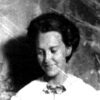 Ameringer, Freda Hogan
Ameringer, Freda Hogan Arkansas Association of Colored Women
Arkansas Association of Colored Women Arkansas Committee of the National Museum of Women in the Arts
Arkansas Committee of the National Museum of Women in the Arts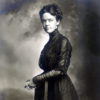 Association of Southern Women for the Prevention of Lynching
Association of Southern Women for the Prevention of Lynching Birth Control Movement
Birth Control Movement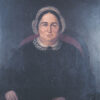 Block, Frances Isaiah Isaacs (Fanny)
Block, Frances Isaiah Isaacs (Fanny) Bosmyer, Peggy Sue
Bosmyer, Peggy Sue Bumpers, Betty
Bumpers, Betty Carmelite Monastery of St. Teresa of Jesus
Carmelite Monastery of St. Teresa of Jesus Chi Omega
Chi Omega Cook, Doris Marie
Cook, Doris Marie Dickey, Betty
Dickey, Betty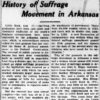 Ellington, Alice Sankey
Ellington, Alice Sankey First Spouses
First Spouses General Federation of Women's Clubs of Arkansas (GFWC)
General Federation of Women's Clubs of Arkansas (GFWC) Good, Mary Lowe
Good, Mary Lowe Hall-Trujillo, Kathryn
Hall-Trujillo, Kathryn Health and Medicine
Health and Medicine Hispanic Women's Organization of Arkansas (HWOA)
Hispanic Women's Organization of Arkansas (HWOA) Huie, Janice Riggle
Huie, Janice Riggle Jones, Julia Hughes
Jones, Julia Hughes Jones, Maxine Temple
Jones, Maxine Temple Kastor, Deena
Kastor, Deena Kizer, Bernice Lichty Parker
Kizer, Bernice Lichty Parker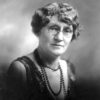 League of Women Voters of Arkansas
League of Women Voters of Arkansas Little Rock Campaign
Little Rock Campaign Marinoni, Rosa Zagnoni
Marinoni, Rosa Zagnoni McCoy, Rose Marie
McCoy, Rose Marie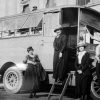 Midwives
Midwives Mock, Lucy Byrd
Mock, Lucy Byrd Nation, Carrie Amelia Moore
Nation, Carrie Amelia Moore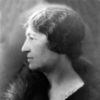 Oldfield, Pearl
Oldfield, Pearl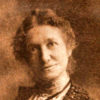 Schoppach, Annie
Schoppach, Annie Tuck, Annabelle Davis Clinton Imber
Tuck, Annabelle Davis Clinton Imber Tulip Female Collegiate Seminary
Tulip Female Collegiate Seminary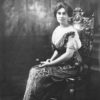 Wingo, Effiegene Locke
Wingo, Effiegene Locke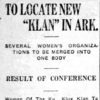 Women of the Ku Klux Klan (WKKK)
Women of the Ku Klux Klan (WKKK)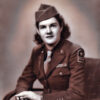 Women's Auxiliary Army Corps (WAAC)
Women's Auxiliary Army Corps (WAAC) Women's Foundation of Arkansas
Women's Foundation of Arkansas Women's Library
Women's Library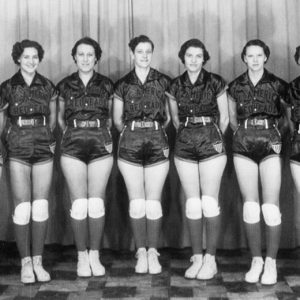 All American Red Heads
All American Red Heads 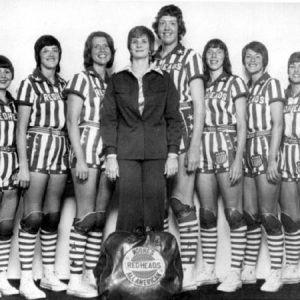 All American Red Heads
All American Red Heads  All American Red Heads Logo
All American Red Heads Logo 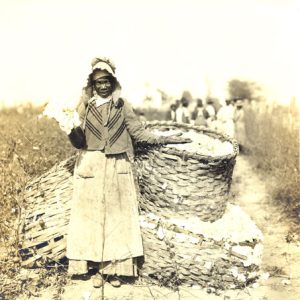 Arkansas City Cotton Picker
Arkansas City Cotton Picker 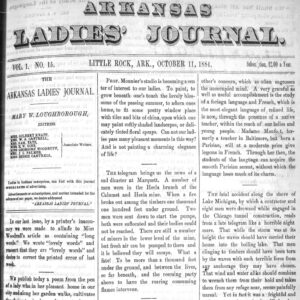 Arkansas Ladies Journal
Arkansas Ladies Journal  Hazel Walker's Arkansas Travelers
Hazel Walker's Arkansas Travelers 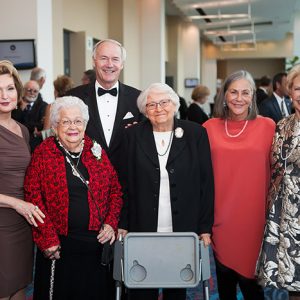 Arkansas Women’s Hall of Fame Inductees, 2015
Arkansas Women’s Hall of Fame Inductees, 2015 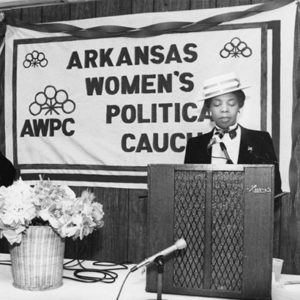 Arkansas Women's Political Caucus
Arkansas Women's Political Caucus 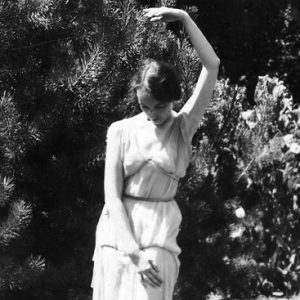 Helen Armstrong
Helen Armstrong 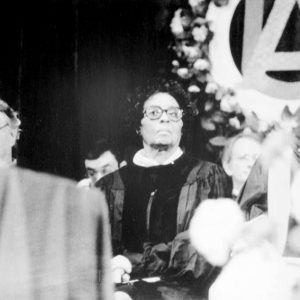 Daisy Bates
Daisy Bates 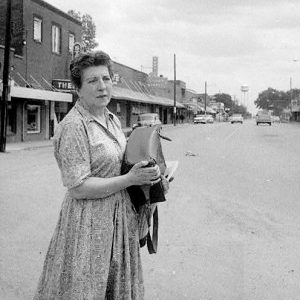 Esther Bindursky
Esther Bindursky 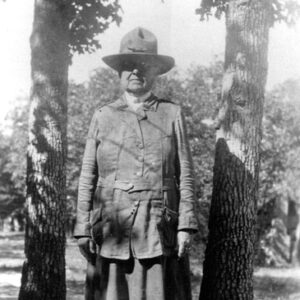 Ida Joe Brooks
Ida Joe Brooks 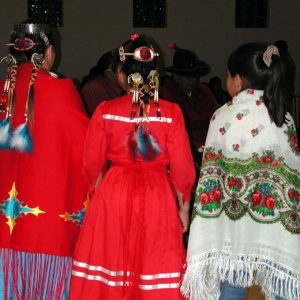 Caddo Dancers
Caddo Dancers 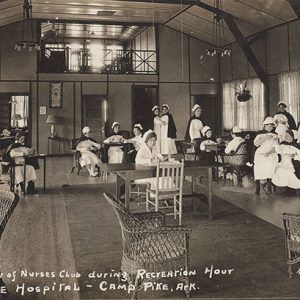 Camp Pike Nurses
Camp Pike Nurses 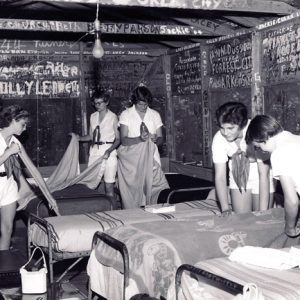 Camp Joyzelle Cabin Interior
Camp Joyzelle Cabin Interior 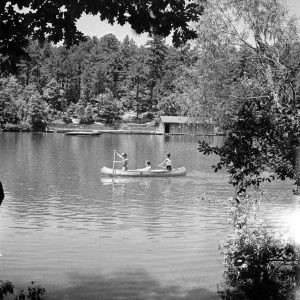 Camp Ouachita National Historic District
Camp Ouachita National Historic District  Hattie Caraway Appointment Certificate
Hattie Caraway Appointment Certificate  Confederate Women Monument
Confederate Women Monument  Consolidated White River Academy Girls Basketball Team
Consolidated White River Academy Girls Basketball Team  Maud Crawford
Maud Crawford  "Crépuscule," Performed by Barbara Hendricks
"Crépuscule," Performed by Barbara Hendricks 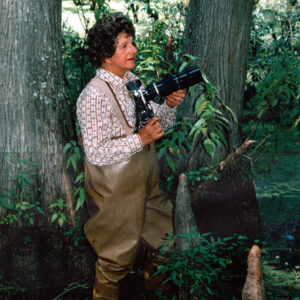 Thase Daniel
Thase Daniel  Jenny Delony
Jenny Delony  Dryden Pottery
Dryden Pottery 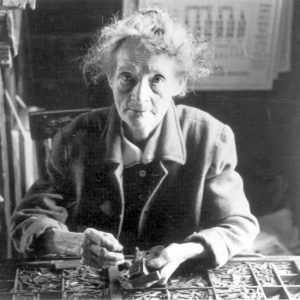 Maud Duncan
Maud Duncan 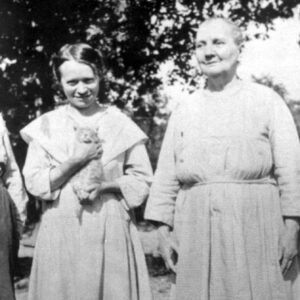 Emma Dusenbury
Emma Dusenbury 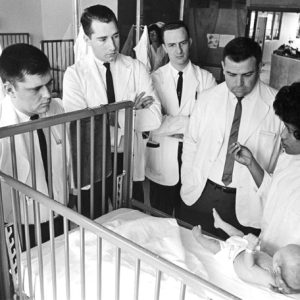 Joycelyn Elders
Joycelyn Elders 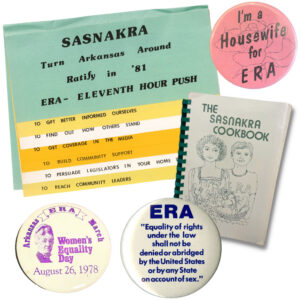 ERA Ephemera
ERA Ephemera 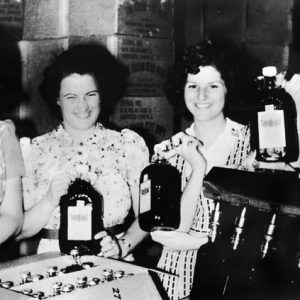 Granata Winery
Granata Winery 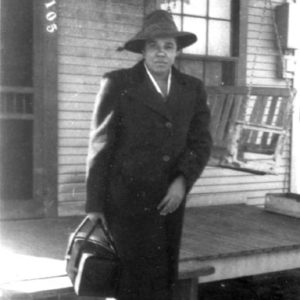 Mamie Hale
Mamie Hale 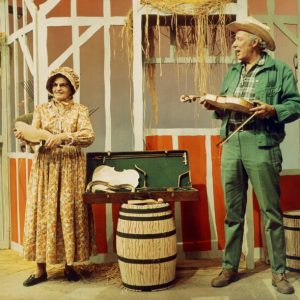 Violet Hensley
Violet Hensley 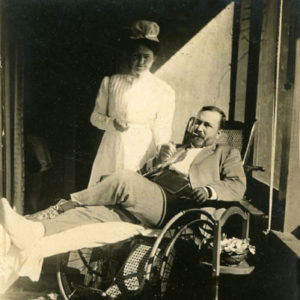 Elisabeth Herndon
Elisabeth Herndon 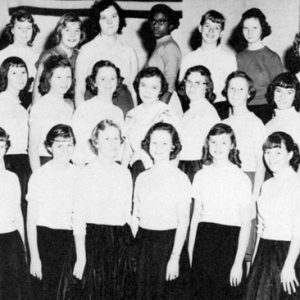 Hoxie Glee Club
Hoxie Glee Club 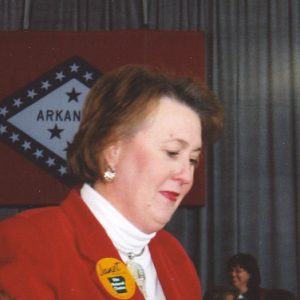 Janet Huckabee
Janet Huckabee  Hypothetical Destination by Robyn Horn
Hypothetical Destination by Robyn Horn  "I Want to Be a Cowboy's Sweetheart," Performed by Patsy Montana
"I Want to Be a Cowboy's Sweetheart," Performed by Patsy Montana  Virginia and Jim Johnson
Virginia and Jim Johnson  Lena Lowe Jordan
Lena Lowe Jordan 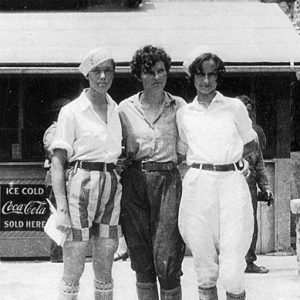 Joyzelle Campers; 1920s
Joyzelle Campers; 1920s 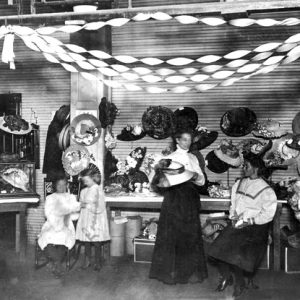 Judsonia Hat Shop
Judsonia Hat Shop  Sue Kidd Baseball Card
Sue Kidd Baseball Card 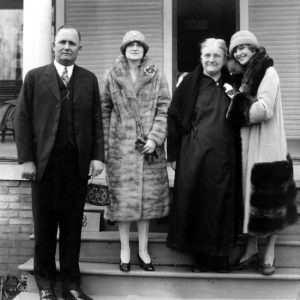 Mary Lewis (right) and Friends
Mary Lewis (right) and Friends 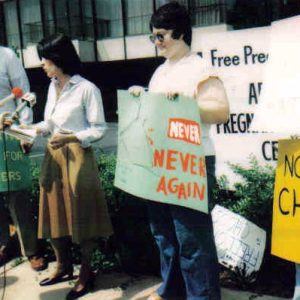 Little Rock NOW
Little Rock NOW 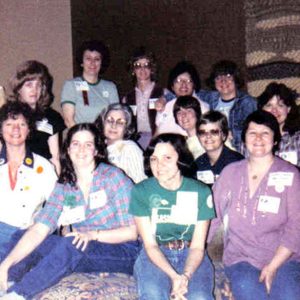 Little Rock NOW
Little Rock NOW 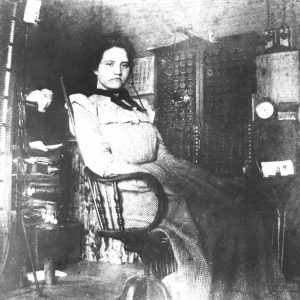 Magnolia Telephone Operator
Magnolia Telephone Operator  Victor Mayfield Story Ad
Victor Mayfield Story Ad 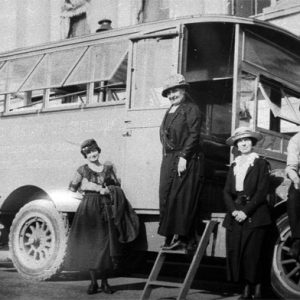 Midwives' Van
Midwives' Van 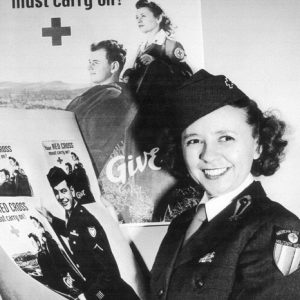 Margarete Neel
Margarete Neel 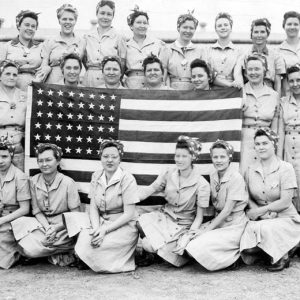 Ordnance Plant Workers
Ordnance Plant Workers 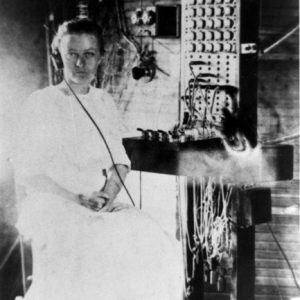 Pangburn Telephone Operator
Pangburn Telephone Operator  Mary Parler
Mary Parler  Peach Festival Float
Peach Festival Float  Lily Peter
Lily Peter 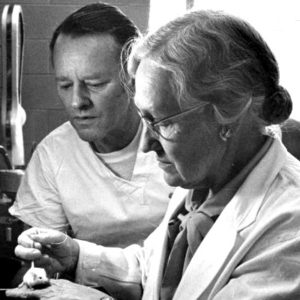 Margaret Pittman
Margaret Pittman 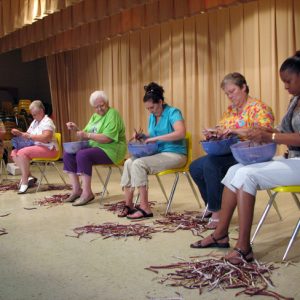 PurpleHull Pea Festival
PurpleHull Pea Festival  PurpleHull Pea Festival Tiller Race
PurpleHull Pea Festival Tiller Race  "Rock Me," Performed by Sister Rosetta Tharpe
"Rock Me," Performed by Sister Rosetta Tharpe 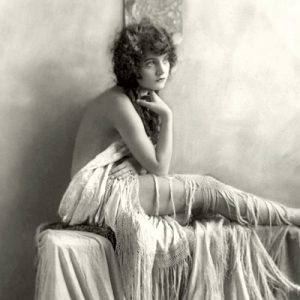 Peggy Shannon
Peggy Shannon  Dorothy Shaver
Dorothy Shaver 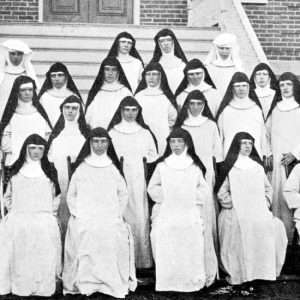 Sisters at Holy Angels Convent
Sisters at Holy Angels Convent  Betty Sorensen with Polio Patient
Betty Sorensen with Polio Patient 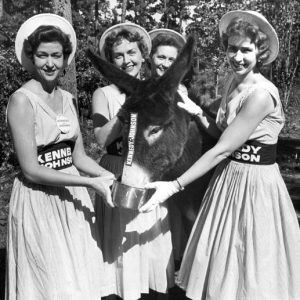 Betty Sorensen
Betty Sorensen 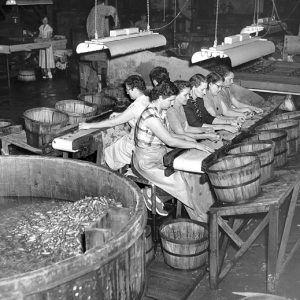 Sorting Pickles; 1955
Sorting Pickles; 1955 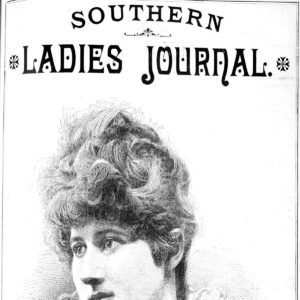 Southern Ladies' Journal
Southern Ladies' Journal 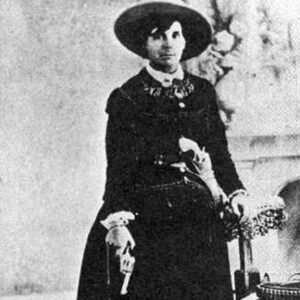 Belle Starr
Belle Starr  Ruby Starr
Ruby Starr 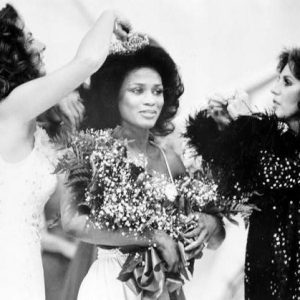 Lencola Sullivan
Lencola Sullivan  Louise Thaden
Louise Thaden 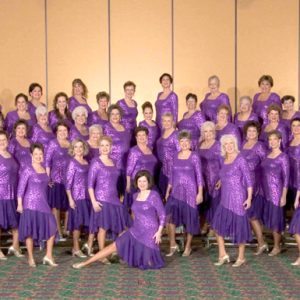 Top of the Rock Chorus
Top of the Rock Chorus 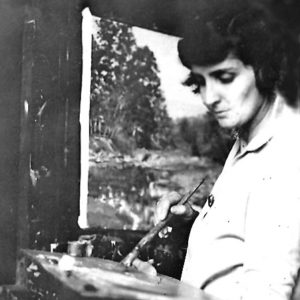 Kathryne Travis
Kathryne Travis 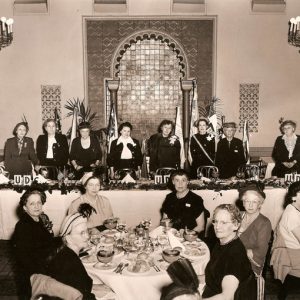 UDC Banquet
UDC Banquet 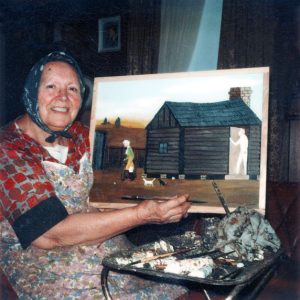 Essie Ann Ward
Essie Ann Ward  WCTU Banquet
WCTU Banquet  Donna Axum Whitworth
Donna Axum Whitworth 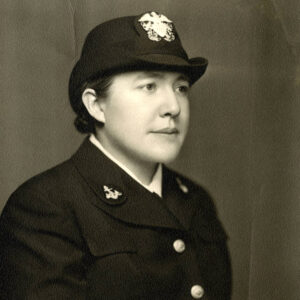 Frances L. Willoughby
Frances L. Willoughby 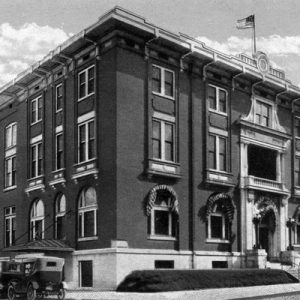 Woman's City Club
Woman's City Club  Women's March for Arkansas, 2017
Women's March for Arkansas, 2017 




My mother, Alma Carter Davis, ran for the Arkansas legislature in the early 1930s in Chicot County. Women did not do such a thing in those days, but my father evidently supported her; she may have used the name Mrs. Ed L. Davis. My twin sister and I remember riding in the back seat of her campaign car (Mother did not drive, so a young man, a former CCC member, I believe, drove for her). We went all over the district, stopping at houses to ask for votes and handing out her cards. When election day came, we were sent to stay at a friend’s house on a plantation across Lake Chicot; the next day, we learned that our mother had lost by only a few votes. Many years later, I saw a news article in the Dermott paper that said she lost by only 12 votes. She did not ask for a recount, probably so as not to harm our father’s law practice. Judge Carneal Warfield from Eudora won the election and served for several terms. Records from the Chicot Spectator were destroyed by fire, so there is no hometown record. We wondered why our mother ran, but we think Roberta Fulbright’s newspaper columns in the 1930s encouraging women of Arkansas to become active in the political process may have encouraged her. My mother was born in a small farming community near Monticello. I know little about her parents, but I think Mother may have been the first in the family to graduate from college; she was in the first graduating class of Monticello A&M (now UA at Monticello). After the election, Mother (a former school teacher) became a member of many organizations in Lake Village and served on the school board, becoming president during our high school years.